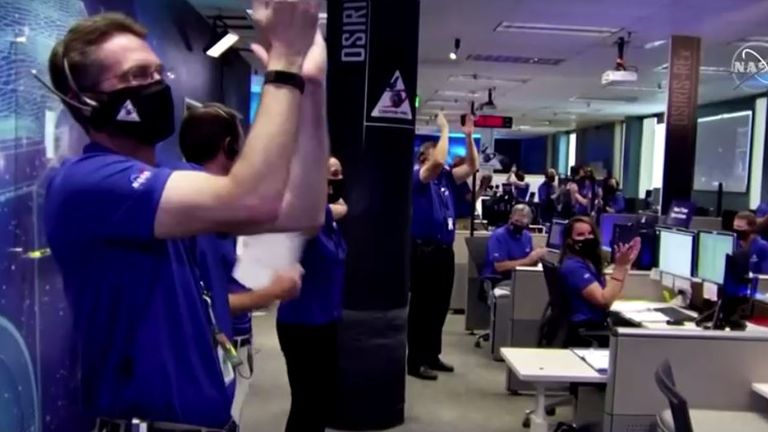A NASA spacecraft has successfully descended on an asteroid to collect a sample to return to Earth, the space centre has confirmed.
On Tuesday, the Osiris-Rex made a four-and-a-half hour journey from its orbit of the Bennu asteroid 200 million miles from Earth to hover just above its surface.
It had to dodge boulders the size of buildings and reach for a spot as small as a parking space with an 11ft robotic arm to grab a miniscule amount of rubble from the asteroid.
The mission lasted between five and 10 seconds, but the team in Denver had to wait for the radio communication delay to find out exactly what had happened.
Finally after 18 minutes, the Osiris-Rex sent confirmation the mission had been successful, drawing cheers from the NASA base.
“I can’t believe we actually pulled this off,” said lead scientist Dante Lauretta, from the University of Arizona.
“The spacecraft did everything it was supposed to do.”
Osiris-Rex has been orbiting Bennu for almost two years, but this mission is a first for the US – only Japan has managed to collect asteroid samples before.
Scientists are aiming for between 60g and 2kg of Bennu’s black, carbon-rich rubble, but will have to wait until 2023 when the samples are returned to Earth to find out just how much was collected.
The van-sized spacecraft can make up to three attempts at the touch-and-go manoeuvre if inadequate samples are returned.
They will be parachuted down into the Utah desert in a capsule.
“That will be another big day for us. But this is absolutely the major event of the mission right now,” NASA scientist Lucy Lim said.
There is a slight chance that Bennu could collide with Earth in the next century.
If the scientists can analyse the material it is made up of, they can better predict the paths and properties of hazardous space rocks like it and help ensure the planet stays safe.

